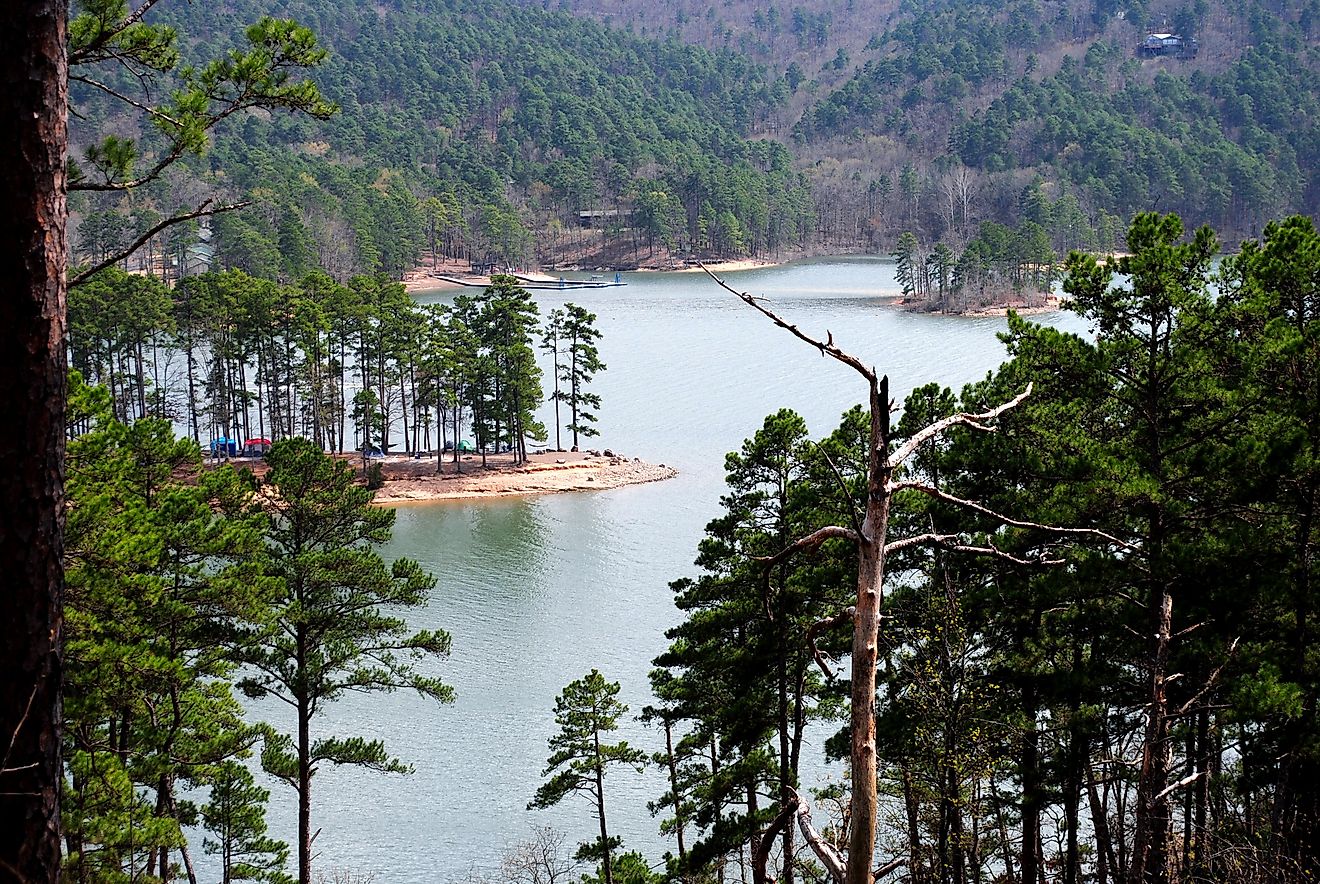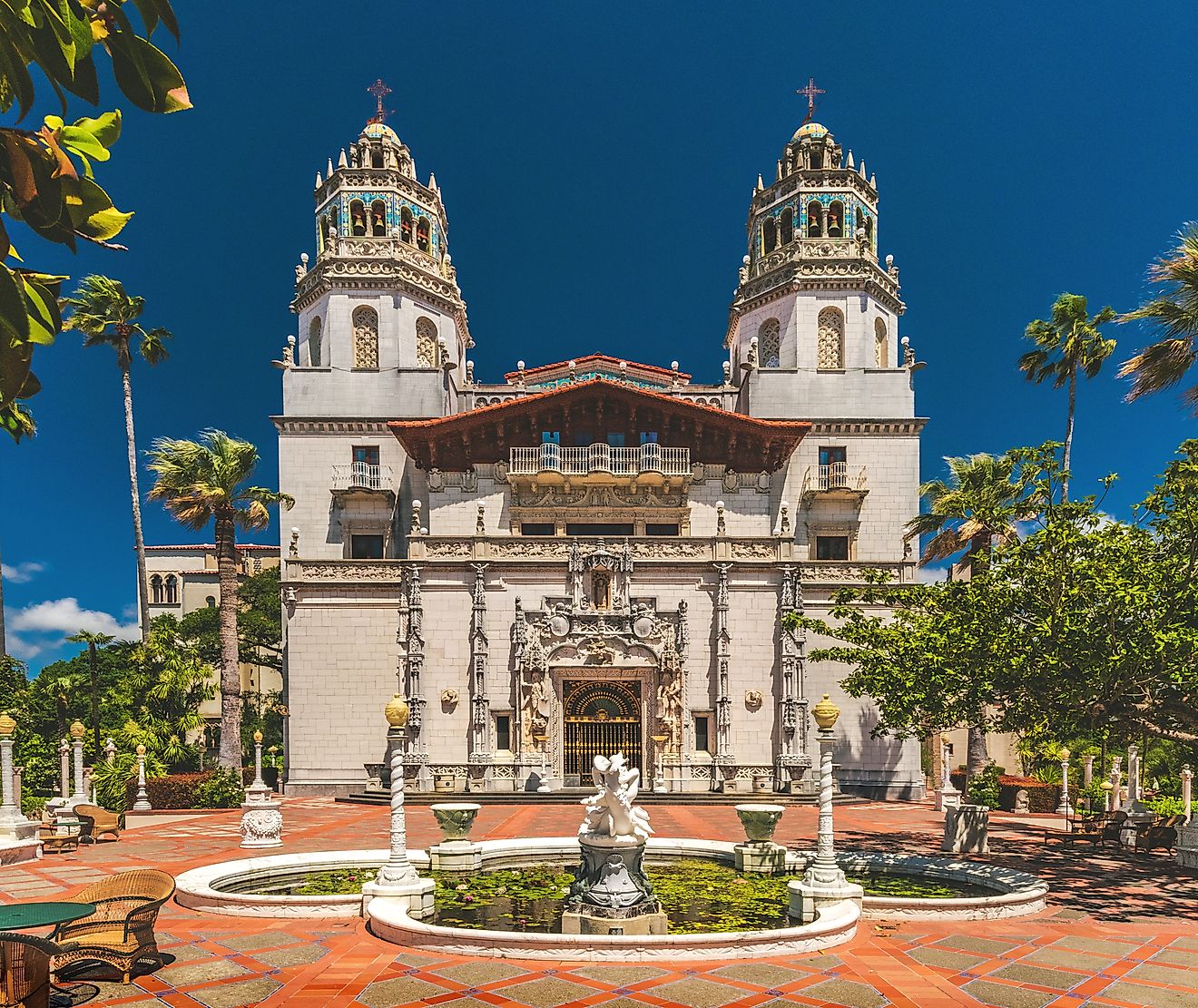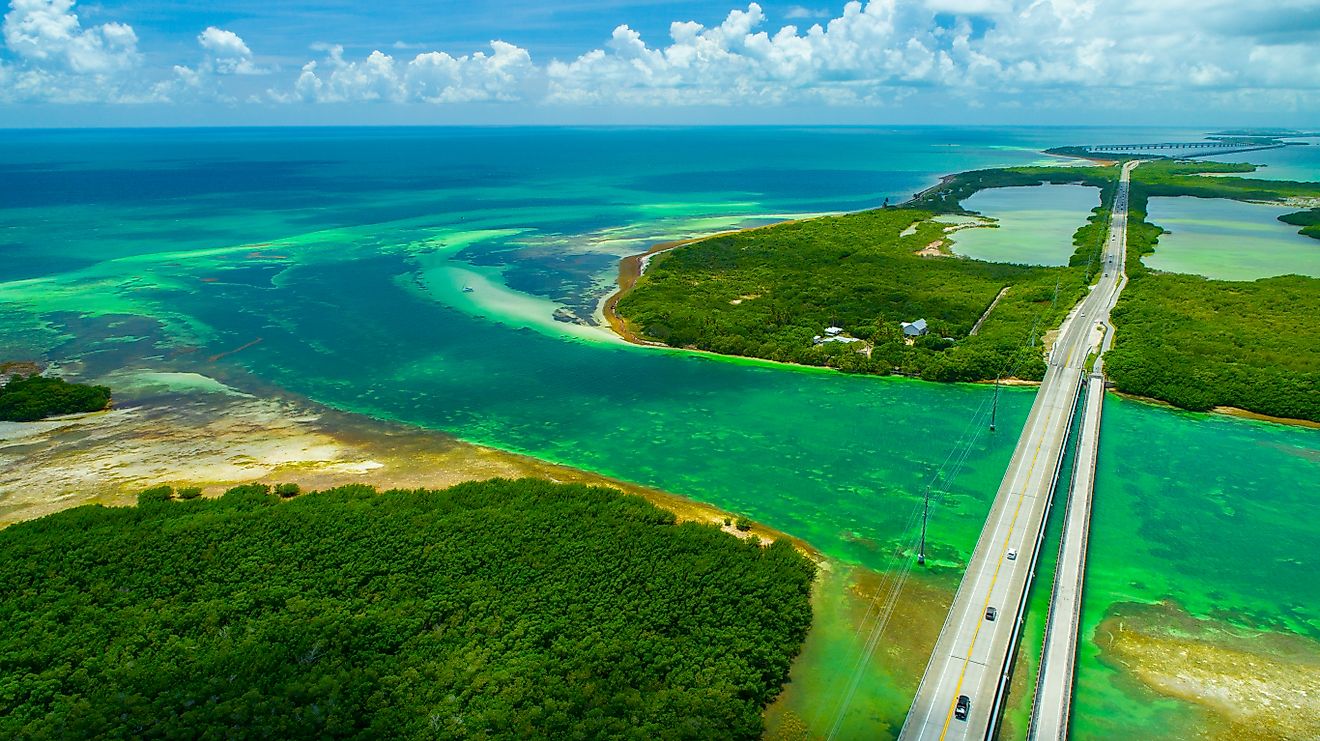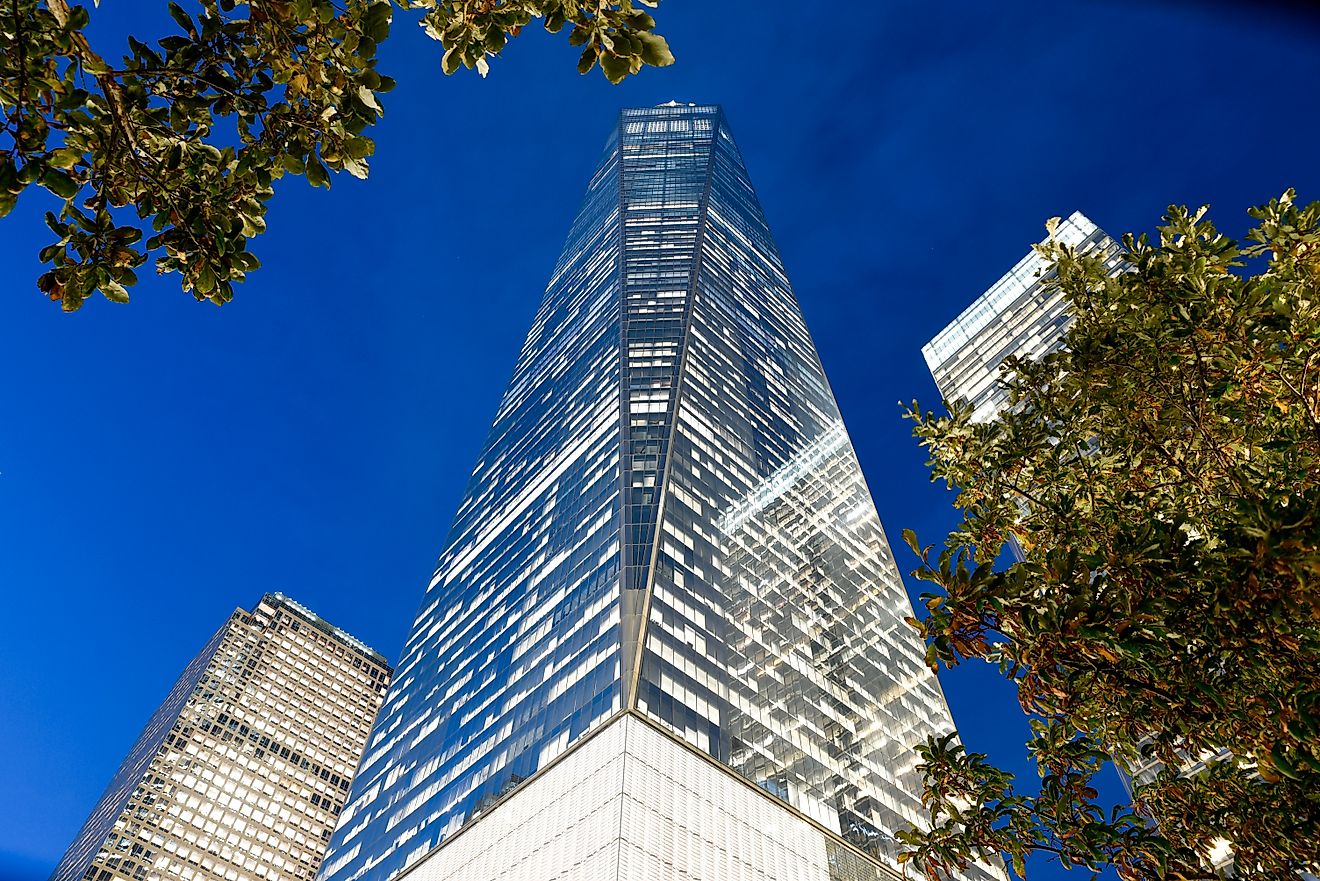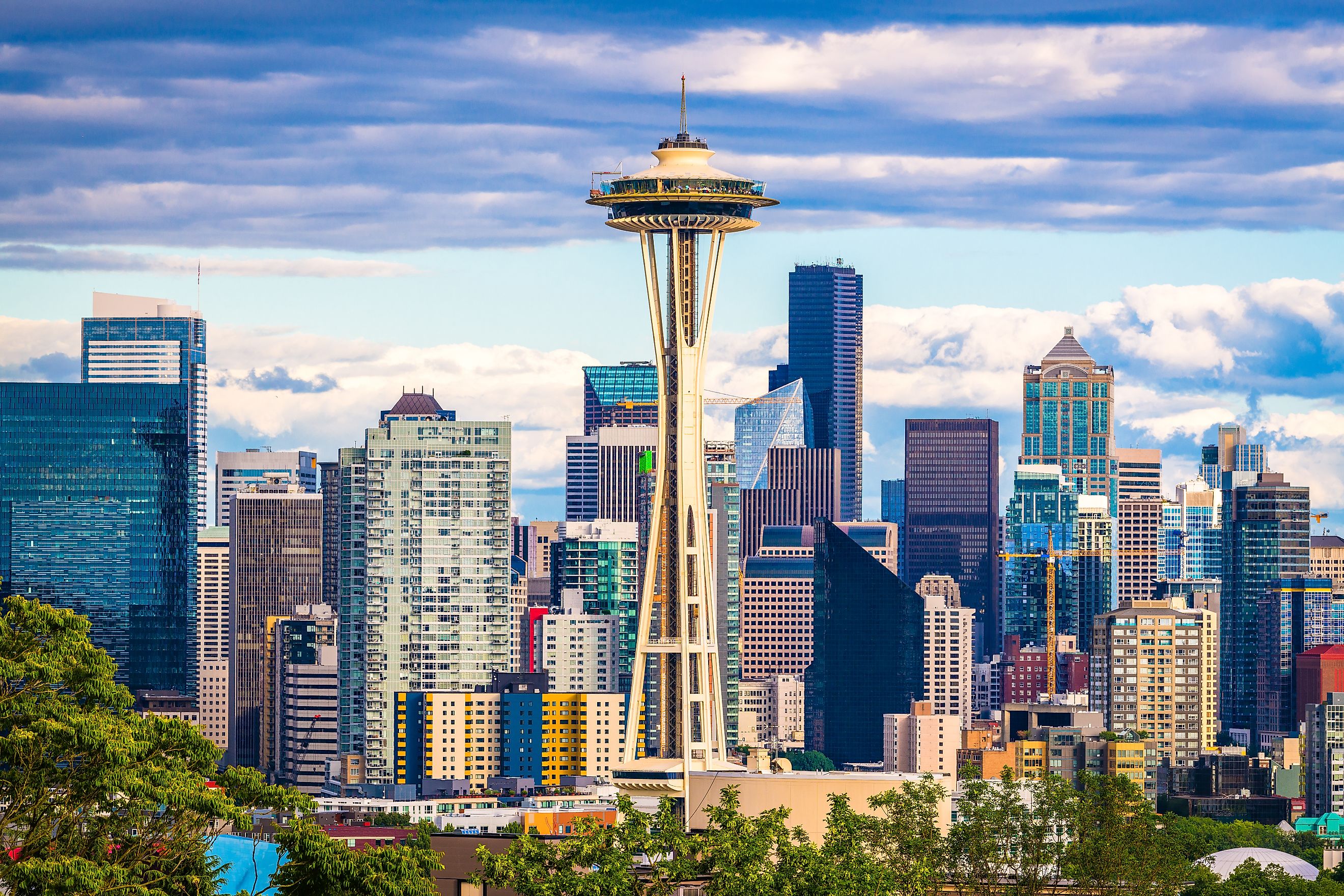
American Architecture: 10 Iconic Buildings That Define US History
Architecture tells a story, shaping how we understand history, culture, and progress. Each building is more than bricks and mortar; it’s a testament to its time's dreams, struggles, and triumphs. Across the United States, certain structures stand as symbols of innovation and identity, blending artistry with purpose.
From towering skyscrapers to solemn landmarks, these creations capture the spirit of eras long past and visions of the future. Their designs represent ambition and resilience, showcasing the creativity and determination defining the nation’s journey. Walking through these spaces is like stepping into history, where every arch, column, or glass pane has a tale to tell. These iconic buildings don’t just shape skylines, they shape the way we see ourselves and the legacy we leave behind.
The White House — Washington, D.C.
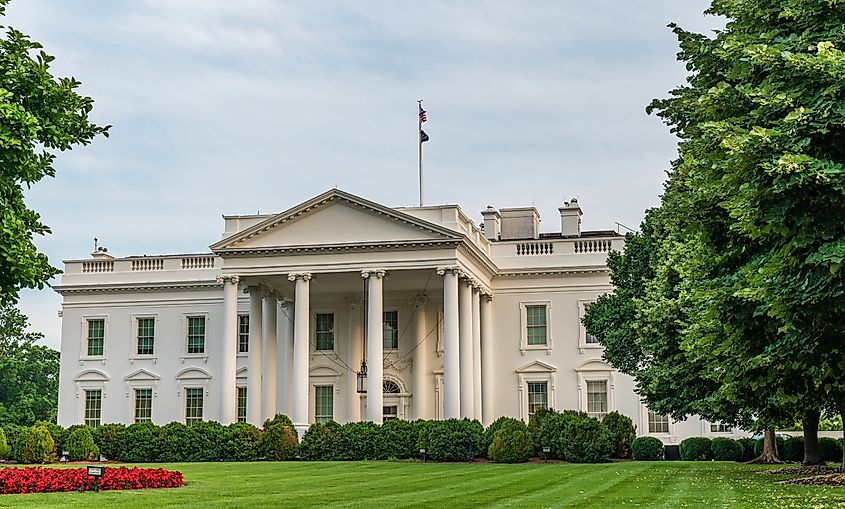
The White House, located in the nation's capital, is far more than the residence of the US President. It is an enduring symbol of democracy and governance. This neoclassical mansion has been the home of every American president since John Adams in 1800, representing the ideals and continuity of the republic.
Completed in 1800, the White House was designed by James Hoban and inspired by classical European influences, including Irish and Georgian architectural styles. Its distinct sandstone façade, tall columns, and symmetrical layout exude a stately elegance, befitting its role. Though partially burned during the War of 1812, the building was quickly restored, showcasing its resilience just like the nation it represents.
Culturally, the White House epitomizes transparency and leadership, often setting the stage for critical speeches and decisions. Tours are open to the public, offering visitors a glimpse into the art-filled staterooms and rich history of America’s most instantly recognizable residence.
Empire State Building — New York, New York
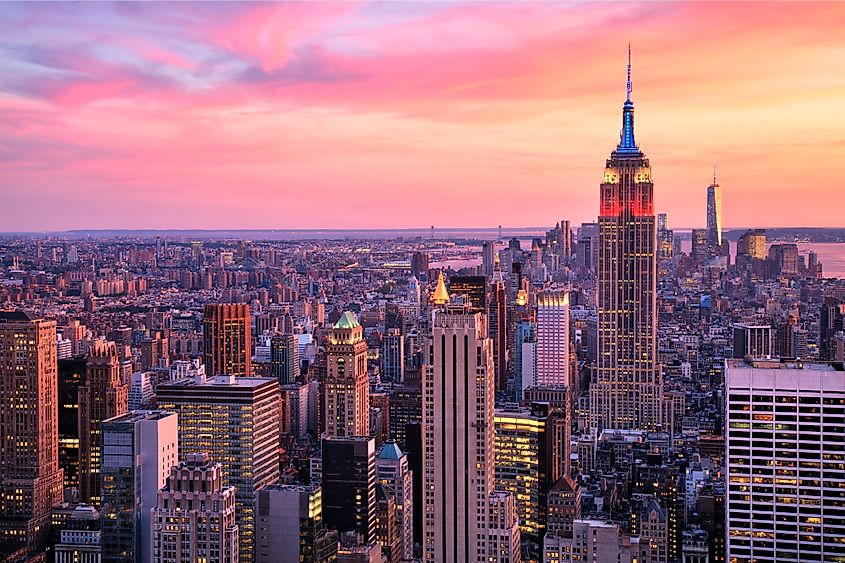
Rising above the skyline of Manhattan, the Empire State Building is a triumphant ode to human ambition and ingenuity. The Art Deco skyscraper became an American cultural icon upon its completion in 1931, taking less than 14 months to construct as a marvel of efficiency and engineering during the Great Depression.
Designed by architectural firm Shreve, Lamb & Harmon, the Empire State Building’s stepped form and intricate spire reflect the boldness of the Art Deco movement. Made primarily of steel and limestone, the building once stood as the tallest in the world, a record it held for nearly 40 years. Its observation decks still offer some of the best panoramic views of New York City.
Globally, the Empire State Building is a beacon of modernism and aspiration, serving as a metaphor for resilience and progress. Its nightly illuminated spire has become a cultural emblem, celebrating holidays, milestones, and worldwide events.
Monticello — Charlottesville, Virginia
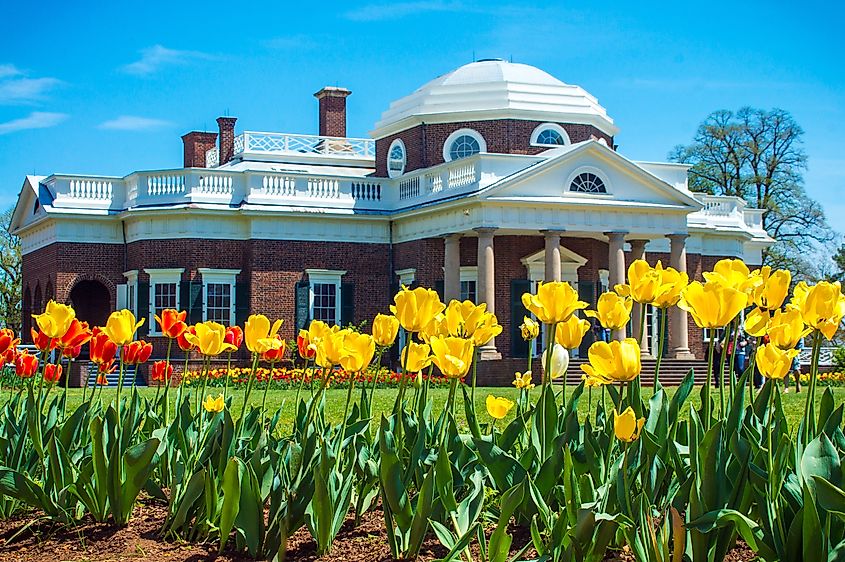
Yellow tulips with Monticello Home in background - Spring Garden in Charlottesville, Virginia.
Perched atop a hill in Virginia, Monticello is the cherished creation of Thomas Jefferson, one of America’s founding fathers. Through his architectural vision, Jefferson not only designed this stunning residence but also sought to reflect Enlightenment ideals of balance, proportion, and innovation.
Completed in 1809, Monticello’s neoclassical design took inspiration from Italian Renaissance architecture, specifically the works of Andrea Palladio. Its domed roof, symmetrical wings, and intricate interiors demonstrate Jefferson’s ingenuity. He used locally sourced materials, reflecting an early American desire for self-sufficiency.
Beyond its architectural beauty, Monticello is a cultural landmark representing progress and contradiction. While a symbol of intellectual ideas and democracy, it also reminds us of the colonial struggle with slavery, as enslaved laborers contributed to its construction. Visitors can tour the estate, exploring its gardens, Jefferson’s study, and exhibits on the lives of its builders.
Independence Hall — Philadelphia, PA
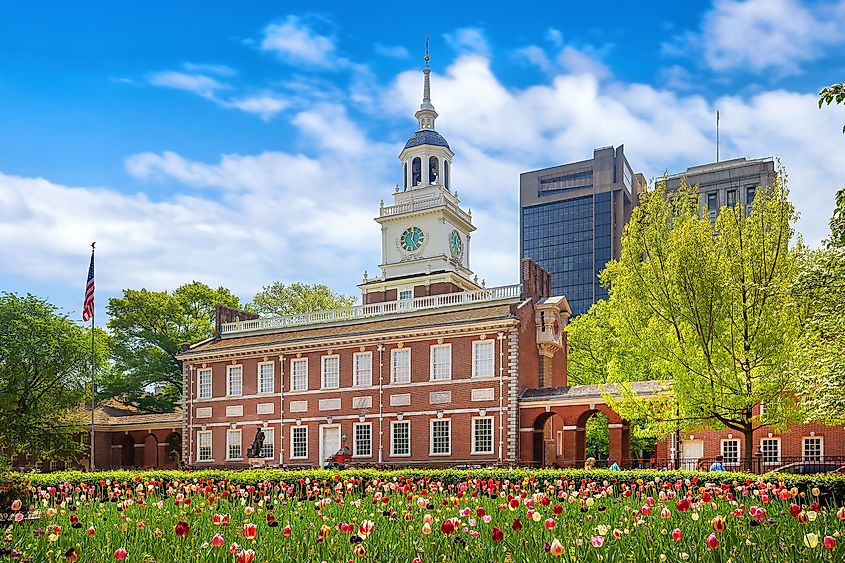
Independence Hall in Philadelphia, Pennsylvania.
Independence Hall in Philadelphia, Pennsylvania, stands as a symbol of American democracy and history. Completed in 1753, this Georgian-style building was initially constructed as the Pennsylvania State House. It is famously known as the site where the Declaration of Independence and the United States Constitution were debated and adopted.
The Assembly Room within its walls is where the Founding Fathers gathered to solidify the nation's principles. The building’s brick facade and iconic clocktower have witnessed pivotal moments that shaped the United States.
Today, Independence Hall is a UNESCO World Heritage Site, celebrated for its role in the country’s founding. It remains a powerful reminder of the enduring ideals of liberty and governance that continue to inspire generations.
Fallingwater — Mill Run, Pennsylvania
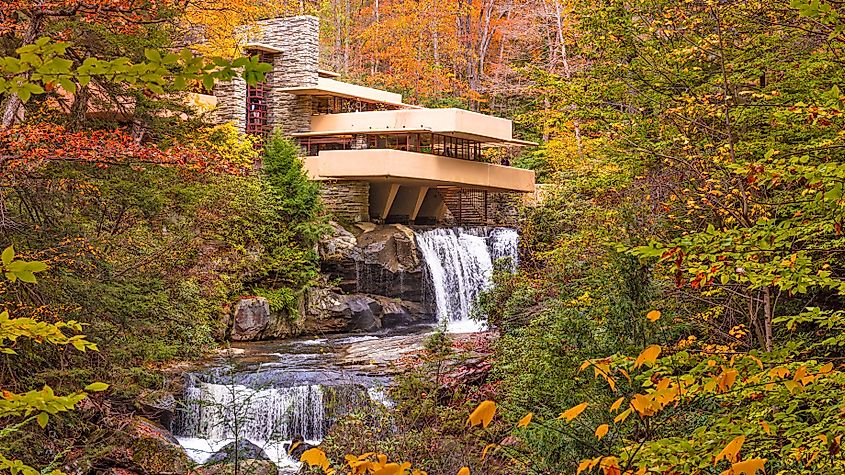
Built into the rugged landscape of Pennsylvania, Fallingwater is an architectural masterpiece that melds seamlessly with nature. Designed in 1935 by Frank Lloyd Wright, this extraordinary private home redefined the relationship between human structures and the environment.
The home’s cantilevered terraces stretch out over a waterfall, with materials like stone, glass, and concrete blending naturally with the surrounding forest. Its integration into the Bear Run landscape demonstrates Wright’s philosophy of “organic architecture,” using design to harmonize with the environment.
Fallingwater has set global precedents for biophilic architecture and inspired environmentally focused designs worldwide. Now a UNESCO World Heritage Site, it welcomes thousands of visitors yearly who marvel at its union of human creativity and natural beauty.
Chrysler Building — New York, New York
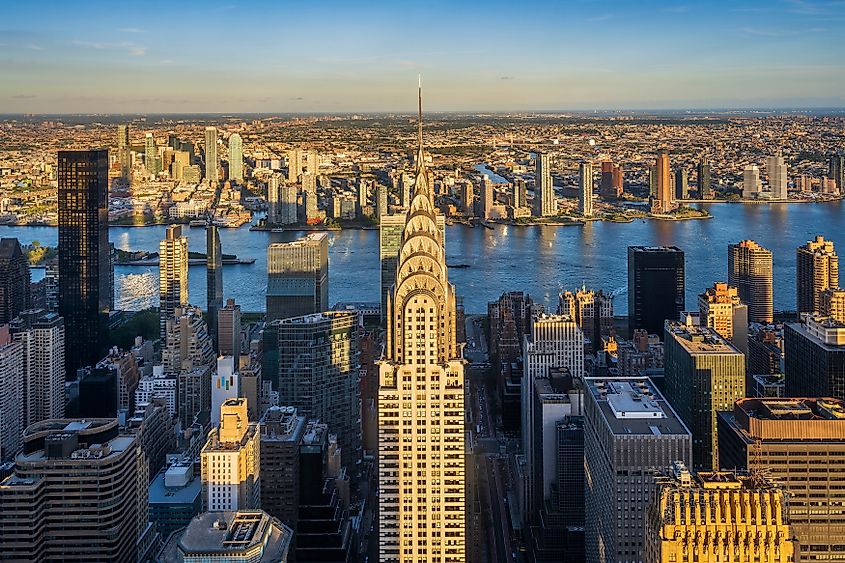
No other building quite encapsulates the excitement of the Roaring 20s like the Chrysler Building. Completed in 1930, this Art Deco skyscraper epitomizes the era’s exuberance and remains one of the most celebrated buildings in New York’s skyline.
Designed by William Van Alen, the building boasts sleek, gleaming steel spires, chevron motifs, and decorative gargoyles modeled after Chrysler car hood ornaments. Built to represent industry and innovation, it briefly held the title of the tallest building in the world before being surpassed by the Empire State Building.
The Chrysler Building’s daring design and lavish detailing set it apart. It is an icon of the Jazz Age and timeless architectural beauty. Though not all areas are publicly accessible, its magnificent lobby remains open for visits, offering a glimpse into its ornate design and rich history.
Gateway Arch — St. Louis, Missouri
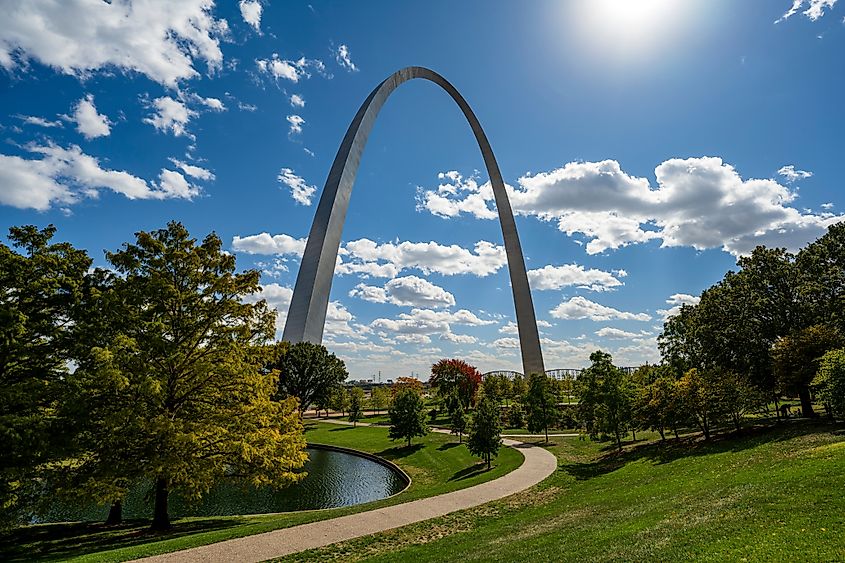
Gateway Arch National Park Missouri.
The Gateway Arch rises like a silver crescent on the banks of the Mississippi River, symbolizing America’s westward expansion. This monument to exploration commemorates the Louisiana Purchase and celebrates the spirit of innovation.
Completed in 1965, the Arch was designed by architect Eero Saarinen in a sleek, minimalist style. Its stainless steel structure, shaped into a perfect curve, soars 630 feet into the sky, making it the tallest man-made monument in the United States.
Besides its architectural uniqueness, the Gateway Arch serves as a reminder of the American dream, inspiring millions of visitors annually who ascend to its observation platform for breathtaking views.
Space Needle — Seattle, Washington
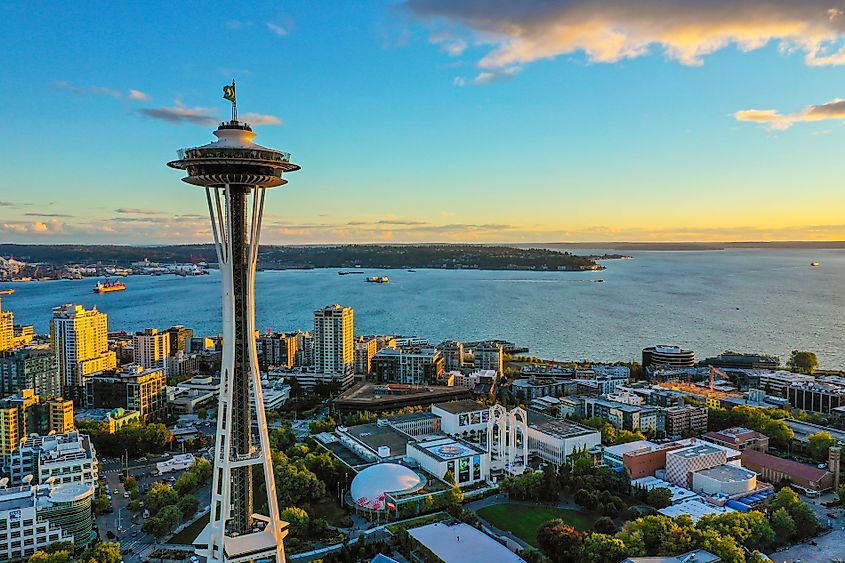
Seattle’s Space Needle pierces the sky, embodying mid-century optimism and the United States’ drive toward technological advancement during the Space Race. Built for the 1962 World’s Fair, the structure was imagined as a futuristic vision of the 21st century.
Architect John Graham, in collaboration with Edward Carlson, designed the Needle's slender, hourglass-like silhouette. At 605 feet, it is constructed primarily of steel and concrete and features one of the first revolving restaurants in the world.
A symbol of innovation, its design inspired countless space-age buildings, particularly in cities seeking progressive imagery. Open year-round, it remains Seattle’s most beloved landmark, offering jaw-dropping views of nearby Mount Rainier and the Puget Sound.
Willis Tower — Chicago, Illinois
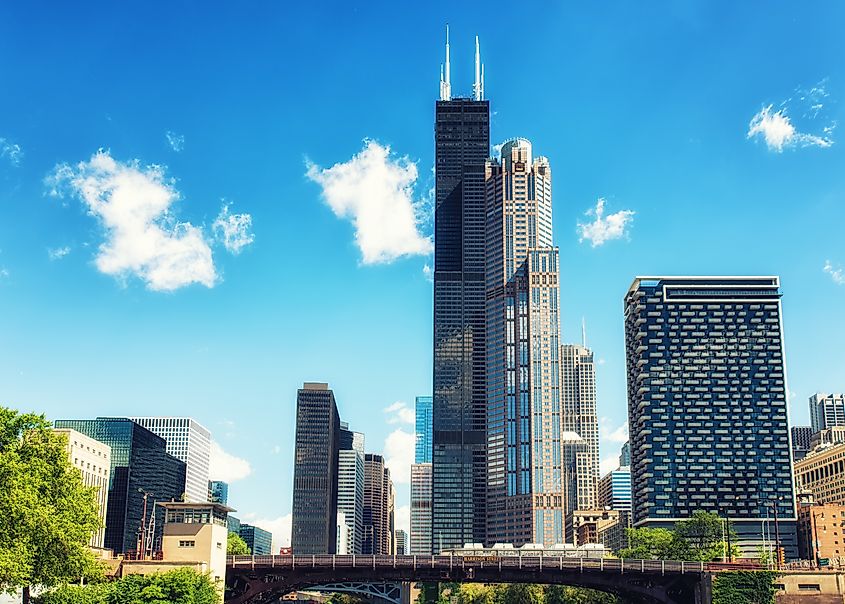
Willis Tower in Chicago on the Chicago River.
Formerly known as the Sears Tower, the Willis Tower in Chicago redefined skyscraper engineering when it was completed in 1973. Standing at 1,450 feet (not including antennas), it held the title of world’s tallest building for 25 years.
Designed by architect Bruce Graham of Skidmore, Owings & Merrill, the tower features a tubular structural design that allows for incredible height while maintaining stability. Its steel and glass exterior reflects Chicago’s industrial roots and modern ambition.
Ultimately, Willis Tower helped cement Chicago’s reputation as a hub for ground-breaking architecture. The building has a Skydeck with glass floors, daring visitors to look down upon the city below.
Hoover Dam — Boulder City, Nevada
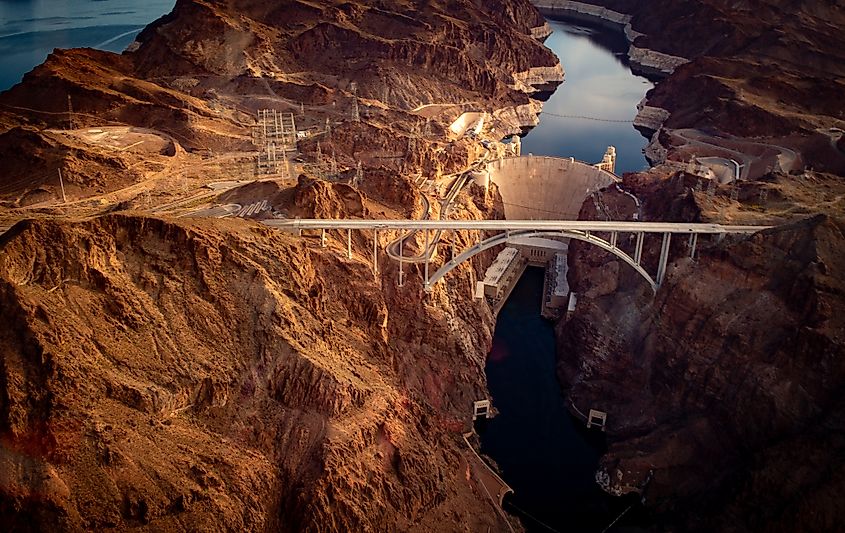
An Aerial View of the Hoover Dam in Nevada.
Straddling the border between Nevada and Arizona, the Hoover Dam is a marvel of modern engineering and a symbol of American perseverance during the Great Depression. Completed in 1936, this concrete arch-gravity dam harnesses the Colorado River’s power to provide electricity, water, and flood control to millions.
Designed by architect Gordon Kaufmann, the dam features clean, stylish details that give its massive structure a touch of elegance. Its smooth, curved facade and towering intake towers exude both strength and sophistication, capturing the industrial optimism of the 1930s.
Beyond its utility, Hoover Dam is a cultural and historical icon. It showcases the ingenuity and resolve of a generation that faced immense challenges yet achieved greatness. Visitors can walk along its crest, marvel at its 726-foot height, or tour the powerhouse to see its turbines in action.
Marvel At America's Best Architectural Designs
The iconic buildings that define American history are more than just architectural masterpieces, they are reflections of the nation’s identity, evolution, and aspirations. Each structure embodies a chapter of the American story, from its foundational ideals to its bold leaps into modernity.
These buildings inspire awe not just for their beauty or scale but also for the narratives they carry within their walls. They remind us of the visionaries who dared to dream, the moments that shaped a nation, and the enduring spirit of creativity and resilience.
